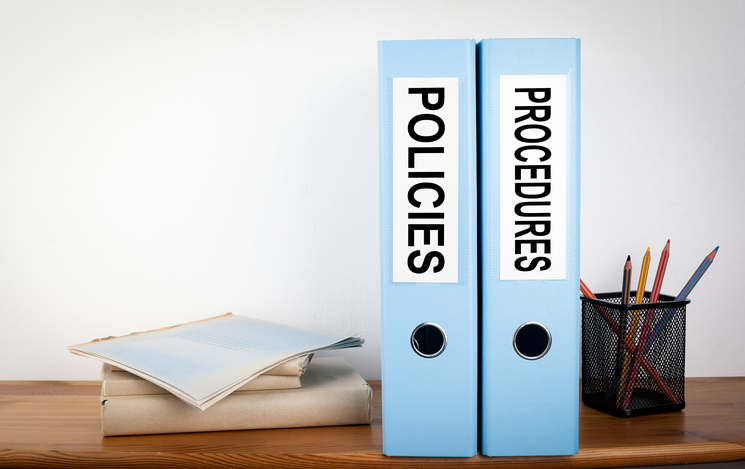If you’re like most businesses, you’re eager to reopen or return to “normal” operations as soon as possible. But before you reopen your offices and businesses—and perhaps while you have some extra time on your hands—it’s a good idea to dust off and update your employment policies to account for the new coronavirus world we now live in. Here are some of the key policies you may want to think about.
Sick Leave, Sick Leave, Sick Leave
The first and most obvious are policies regarding employee sick leave, which normally appear in your employee handbook. Under a new federal law passed in response to COVID-19, many employers are now required to provide paid sick leave for employees who have the virus, have been told to self-quarantine because they may have it, or need to care for an infected individual or for children whose school or daycare is closed.
Your policy needs to be consistent with the law, as well as with new paid leave laws passed by other states, including New York for example. If your policy doesn’t allow for paid sick leave, you’ll need to include a coronavirus exception.
It’s also not a bad idea to revise the sick leave policy to set clear expectations regarding employees who think they may have COVID-19 or another contagious illness such as the flu. They should know not to come to work if they think they may have coronavirus (and that they’ll be paid if they don’t).
Don’t Forget About Other Leave
You’ll also want to consider other employee leave policies, including vacation policies or personal time.
Under normal circumstances, summer vacations, trips to the beach, and Fourth of July festivities would be right around the corner. Even with the uncertainty about what the coming weeks and months will bring, you might consider at least having policies requiring employees to notify you if they are traveling internationally (or even domestically to certain areas) or flying to their destination. You may also consider notifying employees they may be asked to self-quarantine if they choose to travel.
Teleworking
If you don’t already have a telework policy, you’ll want to create one now if at least some employees have the ability to work from home. Government guidance suggests employers encourage teleworking to the extent possible. Will anyone be allowed to work from home once governmental restrictions are lifted?
You’ll also want to set clear expectations—employees need to be actively working and productive during their normal work hours. At the same time, you need to be wary of hourly employees working unauthorized overtime. If you’re going to monitor employee laptops to ensure they’re actually working (but not working too much), you may need to provide notice to employees.
Disaster/Contingency Plans
Many employers put disaster/contingency plans in place as news of the pandemic spread. The plans address such issues as how the employer will respond if local, state, or federal officials declare another state of emergency or if an outbreak occurs in the employer’s place of business.
Your plan should be tailored to your specific situation and take into account things such as whether and which employees may be able to work remotely and how your place of business will be cleaned if employees are diagnosed with the virus. It also should address how core responsibilities will be reallocated if key personnel become sick.
It’s also not a bad idea to designate key individuals employees can contact for information. Remember, however, the plan needs to provide enough discretion to allow you to respond to what is already a rapidly evolving situation. Having a plan is helpful, but not being able to follow through with it can be harmful. Even if your employees agree to be tested for the virus, a plan that says you’ll test all employees isn’t helpful if there are no test kits.
Anything Else That May Help Minimize Risk of Transmission
The last category will vary based on your specific situation, but a number of policies may help reduce the risk of a workplace outbreak. They include policies you already have or may want to think about implementing.
There are too many to list here, but you may want to think about policies regarding:
- Employee travel;
- Office visitors (especially nonessential and non-business purpose visitors);
- Access to certain areas that are or now should be designated for employees (or essential employees) only;
- Employees coming and going from the premises during the day (such as at lunch and on breaks);
- Employees visiting other areas of the workplace; and
- Employees receiving personal mail or packages at work.
Governmental guidance suggests closing common areas if possible and minimizing travel, among other changes to the pre-COVID-19 workplace.
Bottom Line
Planning ahead regarding policies can help your reopening go as smoothly as possible.
Jonathan Sterling and Brendan N. Gooley are attorneys with Carlton Fields in Hartford, Connecticut. You can reach them at jsterling@carltonfields.com and bgooley@carltonfields.com.

